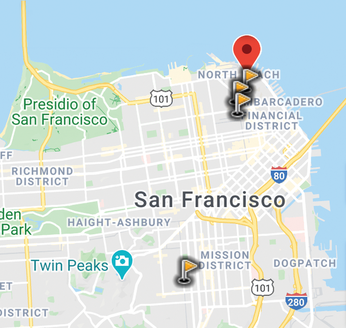Manipulating stored geocoordinates in cellphone photos
Programming Snapshot – Go Geofuzzer
Mike Schilli loves his privacy. That's why he's created a Go program that adds a geo-obfuscation layer to cellphone photos before they are published on online platforms to prevent inquisitive minds from inferring the location.
If you sell your stuff online, you might overlook the potential risk of sales-promoting cellphone photos revealing highly sensitive private information. When you take a picture of the goods at home with your cellphone, the image file may also contain the geodata with which the private address can be determined to within a few yards. Large sales platforms generally do not publish this meta-information, but who wants to give away more information than is absolutely necessary on Ebay or Facebook?
The cellphone also erases geodata directly if desired – but then it looks as if the user has something to hide. That's why the self-written Go program in this issue adds a geo-obfuscation layer to image files to make sure that the geocoordinates are randomly blurred. From this, it might be possible to determine the seller's location down to the neighborhood, but not the exact address.
[...]
Buy Linux Magazine
Subscribe to our Linux Newsletters
Find Linux and Open Source Jobs
Subscribe to our ADMIN Newsletters
Support Our Work
Linux Magazine content is made possible with support from readers like you. Please consider contributing when you’ve found an article to be beneficial.

News
-
Parrot OS Switches to KDE Plasma Desktop
Yet another distro is making the move to the KDE Plasma desktop.
-
TUXEDO Announces Gemini 17
TUXEDO Computers has released the fourth generation of its Gemini laptop with plenty of updates.
-
Two New Distros Adopt Enlightenment
MX Moksha and AV Linux 25 join ranks with Bodhi Linux and embrace the Enlightenment desktop.
-
Solus Linux 4.8 Removes Python 2
Solus Linux 4.8 has been released with the latest Linux kernel, updated desktops, and a key removal.
-
Zorin OS 18 Hits over a Million Downloads
If you doubt Linux isn't gaining popularity, you only have to look at Zorin OS's download numbers.
-
TUXEDO Computers Scraps Snapdragon X1E-Based Laptop
Due to issues with a Snapdragon CPU, TUXEDO Computers has cancelled its plans to release a laptop based on this elite hardware.
-
Debian Unleashes Debian Libre Live
Debian Libre Live keeps your machine free of proprietary software.
-
Valve Announces Pending Release of Steam Machine
Shout it to the heavens: Steam Machine, powered by Linux, is set to arrive in 2026.
-
Happy Birthday, ADMIN Magazine!
ADMIN is celebrating its 15th anniversary with issue #90.
-
Another Linux Malware Discovered
Russian hackers use Hyper-V to hide malware within Linux virtual machines.


